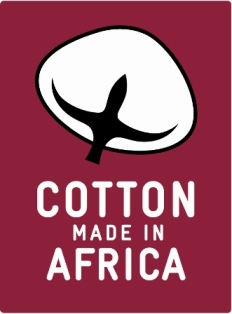Cotton Made in Africa Conserves Water and Reduces Greenhouse Gas Emissions
The small ecological footprint of African cotton

Read the article on Cotton made in Africa's website
CmiA cotton is grown exclusively using rainfed cultivation methods, meaning the smallholder farmers do without any form of supplemental irrigation. At zero cubic meters of freshwater per kilogram of cotton lint, this gives CmiA cotton a clear ecological advantage over conventional cotton with an index of five cubic meters per kilogram. Translated to the amount of cotton needed to manufacture a t-shirt, CmiA conserves around 2,000 litres of water through the sustainable cultivation of the raw material alone. The amount of freshwater used to grow cotton is measured as stress-weighted water consumption. This means that water usage in water-poor regions is given greater weight than that in water-rich regions.
According to the study, 1.9 kilograms of greenhouse gasses (GHGs) are released per kilogram of CmiA cotton lint. Conventional cotton in contrast emits 4.6 kilograms/kg of lint, 2.4 times as much. 70 percent of the GHGs released by CmiA result from the production and use of fertilizers. CmiA produces no emissions from mechanical energy used to work the land, while these account for 34 percent of all emissions for conventionally grown cotton. GHG emissions are measured in CO2 equivalents, so N2O and CH4 are assessed in addition to CO2.In trainings CmiA smallholder farmers learn about modern and efficient cultivation methods. These include the correct application of pesticides, efficient use of fertilizers, and measures to maintain soil fertility. CmiA prohibits the use of pesticides on the Rotterdam Protocol and Stockholm Convention lists and those classified by the WHO as 1a and 1b.
Analysis of GHG emissions and water consumption were done using the life cycle assessment or ecobalance method as defined by the International Standarisation Organisation (ISO 14040:2006). The ecobalance method involves the systematic analysis of the environmental impacts of all stages – all products, methods and services -- of a product’s lifecycle. These include all the environmental impacts resulting from production, use, and disposal or recycling, along with upstream and downstream processes such as the manufacture of raw materials, additives and fuel.

